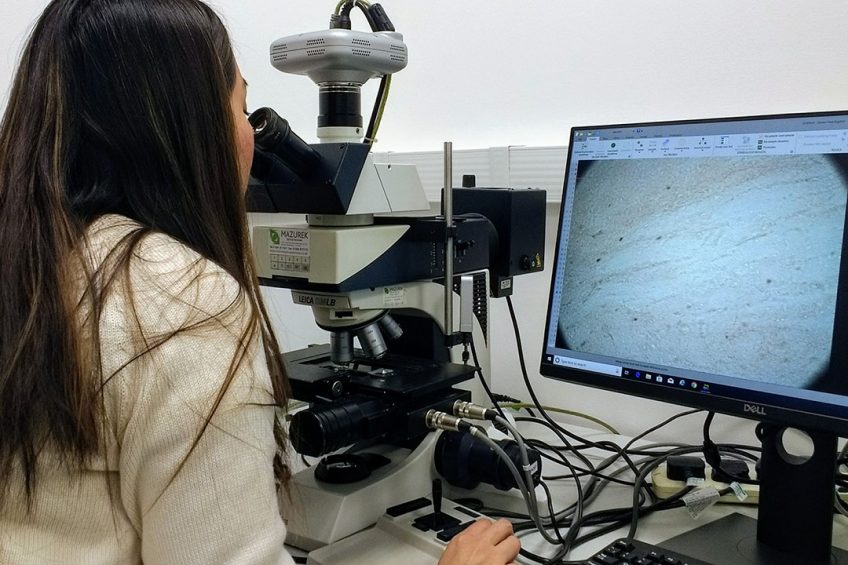Brain cells indicate hen welfare

Over the next few years 20 institutes throughout Europe will be studying laying hen welfare issues in enriched cage and non-cage systems. Dr Tom Smulders, a neuroscientist, says that the welfare of the birds is actually a function in their brain. “So you should also be able to see in the brain of the animal whether it feels good.”
The ChickenStress European Training Network (ETN) is a programme for 14 PhD students. There are 20 research and other institutions involved altogether, 12 of which are beneficiaries and 8 partners, most of them are universities in Europe. The ChickenStress ETN aims to work out which factors in pullets and hens cause stress so that the best possible methods for high quality animal welfare can be implemented.
“After the abolition of conventional cage systems we discovered unexpected new and sometimes serious animal welfare problems in the alternative husbandry systems,” explains Dr Smulders. “We wish to tackle these now very broadly.” Previous studies showed that aviary housing systems are more likely to cause painful keel bone damage. On top of which free-range birds can be infected by pathogens in the range and the probability of cannibalism and pecking also increases.
According to ChickenStress project coordinator Dr Tom Smulders of Newcastle University in the UK, it is unique that experts in neurobiology, physiology and animal behaviour and welfare are working together in the ChickenStress ETN with major players in the poultry industry, including Hendrix Genetics and Vencomatic (see chickenstress.eu for the remaining participating institutions).
The funding for the ChickenStress ETN has been provided by the Marie Sklodowska Curie Actions (MSCA), Horizon 2020 EU subsidy programme. This programme aims to put Europe on the map as an attractive location for research talent. The application for the ChickenStress ETN was made in January 2018 and granted at the end of that year, with the project launched in May 2019. In total 14 PhDs will conduct three years of research, depending on the regulations in their host university.
In the brain of the bird you should be able to detect how the animal feels and whether it has experienced chronic stress.” – Dr Tom Smulders
Function of the brain
More than half the 14 PhDs have already started, says Tom Smulders. “Before Christmas 2019 all the PhDs should be at work.” Smulders has a great deal of research experience himself, focusing on bird brains in general and poultry brains specifically. One aspect of the project is very special to him. This project focuses on aspects of poultry brain function which have never been explored before. “Animal welfare can be considered, basically, as a function of the brain,” he continues. “In the brain of the bird you should be able to detect how the animal feels and whether it has experienced chronic stress.”
Also interesting: Higher welfare raised birds hitting retail shelves in Europe
One of the research questions the PhDs are investigating is whether it is more animal friendly to hatch the eggs of layer breeds in a hatchery or in the poultry house, as is done in the broiler sector. “Practically, it is possible to hatch in the house itself,” says Smulders, “but then the next problem arises of how to select the females?” This part of the research is being done in close collaboration with Vencomatic. “In addition, we want to find out if the light and noise of a hatchery is positive or negative for the welfare of the chick,” Smulders adds. “In nature, a broody hen also occasionally stands up, and is not constantly sitting on the eggs. Having occasional exposure to light through the egg shell seems to be important for the healthy neurological development of the chick.”
Another aspect of early life is the experience of the young chicks. PhDs in the Netherlands (Utrecht University) and Flanders (ILVO, Ghent) are doing experiments with ‘dark brooders’, as they are known, a canopy under which the chicks rest, just like they would under the wings of the hen.
Having occasional exposure to light through the egg shell seems to be important for the healthy neurological development of the chick.” – Dr Tom Smulders.
Genetic markers
Another part of the post-graduate research is focused on the genetics of laying hens. Dr Smulders is delighted that Hendrix Genetics is contributing to the programme. “In the area of genetics, the PhDs will look at whether there are certain genetic markers that would indicate if certain laying hen hybrids can cope better with stress. Roughly speaking, our research lies between neurology and genetics. We want to gain a better understanding of how all these aspects work across both research fields. So we can make better recommendations to breeding companies about how to select stress-resilient animals, as well as to farmers about which birds are more suited to which housing systems.”

For example, white hens react very differently to stress than brown hens, and how they respond to different rearing and housing environments also differs. Dr Smulders wants to know why this is and relate it back to neurology and genetics. “With regard to the husbandry system,” Smulders explains, “many of the rearing houses used worldwide for pullets involve floor housing. In the next phase, the pullets are often moved to aviary houses. With all these transitions we want to look at what the physical impact is and what happens in the brain of the poultry.” Dr Michael J. Toscano from the University of Bern is researching this question and his students will look at different ways to improve the transition from rearing to housing systems. This may also help to reduce keel bone damage, which is prevalent in some aviary systems.

After 8 weeks chroic stress is visible on the bird’s brain
Previous research on poultry brains conducted by Newcastle University has shown that after as little as 8 weeks the effects of chronic stress are visible in the brain. “Then you see differences occurring in the brains of the birds,” says Smulders. This research was mainly conducted by a PhD student of the Open University of Israel. According to Smulders the advantage of the ChickenStress ETN is that so many research institutions are working together. “We all have our own expertise, of course, and we also learn from each other. Breeding and genetics is certainly an important part of the research, as is the study of the various husbandry and management systems. By bringing in brain science as well, we are able to gain new insights that would be impossible without that extra dimension.”
Also interesting: Video aimed at improving broiler welfare












